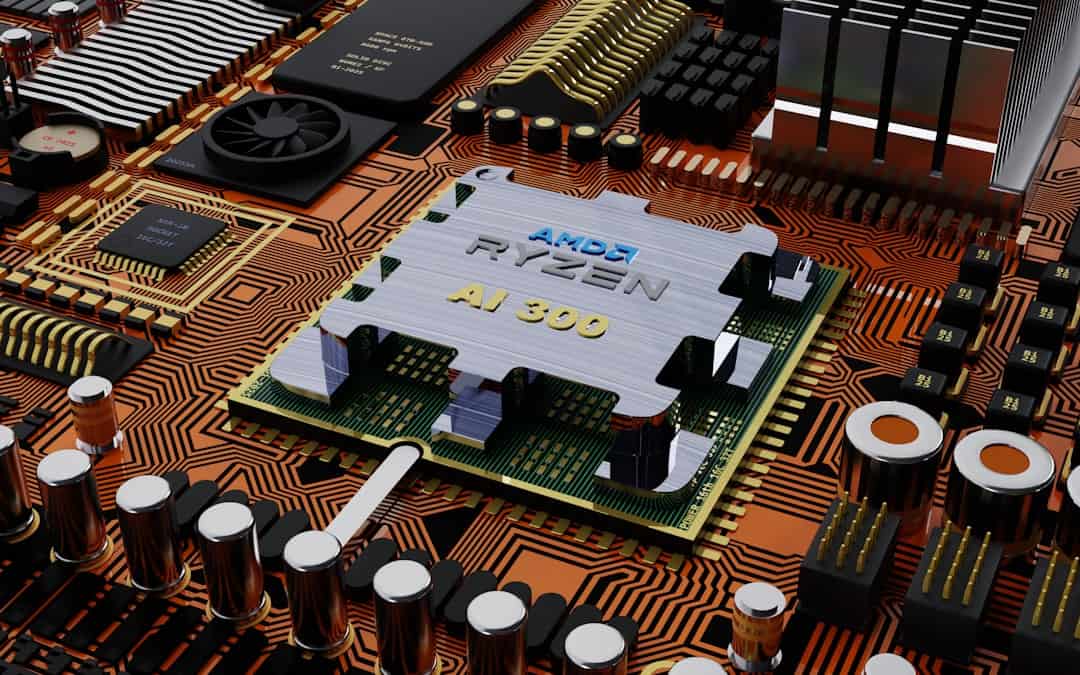Machine learning, artificial intelligence (AI), and deep learning are interconnected fields that have experienced rapid advancements in recent years. Machine learning is a subset of AI that focuses on developing algorithms and statistical models enabling computers to improve task performance through experience. AI encompasses the broader concept of simulating human intelligence processes in machines, particularly computer systems.
Deep Learning, a subset of machine learning, utilizes multi-layered neural networks to learn from data. These technologies have demonstrated potential to transform various industries and have already begun to do so in numerous ways. The importance of machine learning, AI, and deep learning has grown significantly in the digital era.
Their applications span a wide range of domains, including virtual assistants like Siri and Alexa, autonomous vehicles, and personalized recommendation systems on streaming platforms. These technologies excel at analyzing large datasets and making data-driven predictions or decisions, providing substantial value to businesses and organizations. As these fields continue to progress, their impact across various industries is becoming increasingly pronounced.
Key Takeaways
- Machine learning, AI, and deep learning are interconnected fields that involve training machines to learn from data and make decisions, with deep learning being a subset of machine learning that uses neural networks to mimic the human brain.
- AI has had a significant impact on various industries, including healthcare, finance, transportation, and entertainment, by improving efficiency, accuracy, and decision-making processes.
- Breakthroughs in deep learning technology have led to advancements in natural language processing, image recognition, and autonomous vehicles, revolutionizing the way machines understand and interact with the world.
- Machine learning plays a crucial role in healthcare by enabling predictive analytics, personalized medicine, and medical image analysis, ultimately improving patient outcomes and reducing healthcare costs.
- Ethical considerations in AI development, such as bias in algorithms, data privacy, and job displacement, are important factors that need to be addressed to ensure responsible and fair use of AI technology.
- The future of AI and machine learning holds potential for further advancements in robotics, personalized learning, and smart cities, but also raises concerns about job displacement and ethical implications.
- Challenges and opportunities in the field of deep learning include the need for more labeled data, computational resources, and interpretability of complex models, as well as the potential for breakthroughs in areas like drug discovery and climate modeling.
The Impact of AI on Various Industries
The impact of AI on various industries has been profound and continues to grow as the technology advances. In the healthcare industry, AI is being used to improve diagnostics, develop personalized treatment plans, and streamline administrative tasks. In finance, AI is being used for fraud detection, risk assessment, and algorithmic trading.
In manufacturing, AI is being used for predictive maintenance, quality control, and supply chain optimization. In retail, AI is being used for personalized marketing, demand forecasting, and inventory management. These are just a few examples of how AI is transforming different sectors of the economy.
The impact of AI on various industries is not limited to improving efficiency and productivity. It also has the potential to create new business models and revenue streams. For example, in the entertainment industry, AI is being used to create personalized content recommendations and develop new forms of interactive storytelling.
In agriculture, AI is being used for precision farming, crop monitoring, and automated harvesting. These innovations have the potential to revolutionize the way we produce and consume food. As AI continues to advance, its impact on various industries will only continue to grow.
Breakthroughs in Deep Learning Technology

Deep learning technology has seen several breakthroughs in recent years that have significantly advanced the field. One of the most significant breakthroughs is the development of convolutional neural networks (CNNs), which have revolutionized computer vision tasks such as image recognition and object detection. CNNs have enabled machines to achieve human-level performance on these tasks and have been widely adopted in various applications, from autonomous vehicles to medical imaging.
Another breakthrough in deep learning technology is the development of recurrent neural networks (RNNs) and long short-term memory (LSTM) networks, which have revolutionized natural language processing tasks such as speech recognition and language translation. These technologies have enabled machines to understand and generate human language with unprecedented accuracy and fluency. As a result, they have been widely adopted in virtual assistants, chatbots, and language translation services.
The Role of Machine Learning in Healthcare
| Metrics | Data |
|---|---|
| Improved Diagnostics | Machine learning algorithms can analyze medical images and data to assist in diagnosing diseases. |
| Predictive Analytics | Machine learning can be used to predict patient outcomes and identify individuals at risk of certain conditions. |
| Personalized Treatment | Machine learning can help in creating personalized treatment plans based on individual patient data. |
| Drug Discovery | Machine learning can analyze large datasets to identify potential drug candidates and accelerate the drug discovery process. |
| Healthcare Operations | Machine learning can optimize hospital operations, patient scheduling, and resource allocation. |
Machine learning has played a significant role in transforming the healthcare industry in recent years. One of the most important applications of machine learning in healthcare is in medical imaging, where it has been used to improve diagnostics and develop personalized treatment plans. Machine learning algorithms can analyze medical images such as X-rays, MRIs, and CT scans to detect abnormalities and assist radiologists in making more accurate diagnoses.
Another important application of machine learning in healthcare is in predictive analytics, where it has been used to identify patients at risk of developing certain conditions or complications. By analyzing large amounts of patient data, machine learning algorithms can identify patterns and trends that can help healthcare providers intervene early and prevent adverse outcomes. This has the potential to improve patient outcomes and reduce healthcare costs.
Ethical Considerations in AI Development
As AI continues to advance and become more integrated into various aspects of our lives, it is important to consider the ethical implications of its development and use. One of the key ethical considerations in AI development is bias and fairness. Machine learning algorithms are only as good as the data they are trained on, and if that data is biased, the algorithms can perpetuate that bias.
This can lead to unfair outcomes for certain groups of people and exacerbate existing social inequalities. Another ethical consideration in AI development is privacy and security. As AI systems become more sophisticated and capable of analyzing large amounts of data, there is a risk that sensitive information could be compromised or misused.
It is important for developers and organizations to prioritize data privacy and security when designing and implementing AI systems.
The Future of AI and Machine Learning

The future of AI and machine learning is incredibly exciting and full of potential. As these technologies continue to advance, we can expect to see even more impactful applications across various industries. In healthcare, we can expect to see further advancements in personalized medicine, disease prediction, and drug discovery.
In finance, we can expect to see more sophisticated fraud detection systems, risk assessment models, and algorithmic trading strategies. In transportation, we can expect to see further advancements in autonomous vehicles, traffic management systems, and logistics optimization. The future of AI and machine learning also holds great promise for addressing some of the world’s most pressing challenges.
For example, these technologies have the potential to revolutionize agriculture by improving crop yields, reducing food waste, and mitigating the impact of climate change. They also have the potential to revolutionize education by providing personalized learning experiences and expanding access to quality education for people around the world.
Challenges and Opportunities in the Field of Deep Learning
While deep learning technology has seen significant advancements in recent years, there are still several challenges that need to be addressed. One of the main challenges is the need for large amounts of labeled data to train deep learning models effectively. This can be particularly challenging in domains where labeled data is scarce or expensive to obtain.
Another challenge in the field of deep learning is the interpretability of models. Deep learning models are often referred to as “black boxes” because it can be difficult to understand how they arrive at their predictions or decisions. This lack of interpretability can be a barrier to their adoption in certain domains where transparency and accountability are important.
Despite these challenges, there are also many opportunities in the field of deep learning. One opportunity is the development of more efficient algorithms that require less data for training and are more interpretable. Another opportunity is the integration of deep learning with other fields such as reinforcement learning and unsupervised learning, which has the potential to unlock new capabilities and applications.
In conclusion, machine learning, AI, and deep learning are rapidly evolving fields with the potential to revolutionize various industries and address some of the world’s most pressing challenges. As these technologies continue to advance, it is important for developers, organizations, and policymakers to consider the ethical implications of their development and use. While there are still challenges that need to be addressed in the field of deep learning, there are also many opportunities for further advancements that will continue to shape the future of AI and machine learning.
If you’re interested in the intersection of technology and the physical world, you may want to check out this article on integrating physical and virtual spaces in the metaverse. This piece explores how advancements in machine learning, artificial intelligence, and deep learning are shaping the way we interact with both the real and virtual worlds.
FAQs
What is machine learning?
Machine learning is a subset of artificial intelligence that involves the development of algorithms and statistical models that enable computers to improve their performance on a specific task through experience, without being explicitly programmed.
What is artificial intelligence?
Artificial intelligence (AI) refers to the simulation of human intelligence in machines that are programmed to think and act like humans. It encompasses a wide range of technologies, including machine learning and deep learning.
What is deep learning?
Deep learning is a subset of machine learning that uses neural networks with multiple layers to learn from data. It is particularly effective for processing and analyzing large amounts of complex data, such as images, audio, and text.
How is machine learning used in real-world applications?
Machine learning is used in a wide range of real-world applications, including recommendation systems, natural language processing, image and speech recognition, medical diagnosis, financial forecasting, and autonomous vehicles.
What are the benefits of using machine learning and artificial intelligence?
Some of the benefits of using machine learning and artificial intelligence include automation of repetitive tasks, improved decision-making based on data analysis, enhanced efficiency and productivity, and the ability to handle complex and large-scale data processing.
What are some common challenges in machine learning and artificial intelligence?
Common challenges in machine learning and artificial intelligence include the need for large amounts of high-quality data, the interpretability of complex models, ethical considerations related to bias and fairness, and the potential for job displacement due to automation.











Leave a Reply